Heraldry
About Andrew Cusack
 Writer, web designer, etc.; born in New York; educated in Argentina, Scotland, and South Africa; now based in London.
Writer, web designer, etc.; born in New York; educated in Argentina, Scotland, and South Africa; now based in London. read more
News
Blogs
Reviews & Periodicals
Arts & Design
World
France
Mitteleuropa
Knickerbockers
Argentina
The Levant
Africa
Cape of Good Hope
Netherlands
Scandinavia
Québec
India
Muscovy
Germany
Academica
Bon Voyage
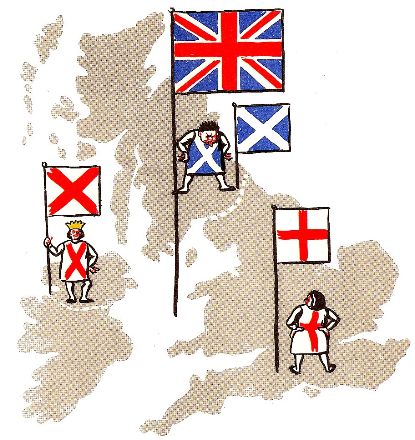
Heading to Scotland for a little bit, then down to Somerset for a spell. Dino Marcantonio, you’re in charge!
Heraldry is as much part of the future as present
by JOHN HALDANE
THE SCOTSMAN | Saturday 9 September 2006
A COUPLE of weeks ago St Andrews was treated to the sight of a colourful parade of heralds, hereditary standard bearers, nobility and clan chiefs, representatives of the University, leaders of the Christian churches, and sundry others, processing through the town to the accompaniment of the pipes. The occasion was the opening by the Princess Royal of the 27th International Congress of Genealogical and Heraldic Sciences, featuring the first meeting of European heralds since the middle ages.
This weekend St Andrews sees another ritual procession: this of Knights and Dames of the Equestrian Order of the Holy Sepulchre gathering for an investiture in the 15th century chapel of St Salvator’s College. Once again gowns, insignia, and banners of medieval inspiration will be on view as Scottish members are joined by representatives from abroad and from the Sovereign Military Order of St John – with the pipes again adding a distinctively Caledonian note.
Such events, and the groups and individuals they bring together can easily be seen as part of a world of childlike, or even childish, fantasy. Trying to live as if in a realm of castles, chivalarous knights, noble heroes, fair ladies, courtly love and sacred adventures, all rendered for posterity in chronicles and ballads.
The Heraldic Congress
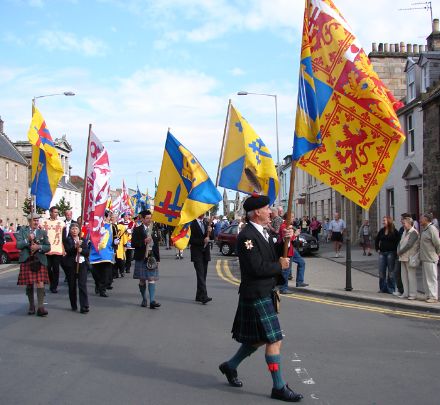
THE ROYAL BURGH of St Andrews was recently host to the largest gathering of heralds since the Middle Ages for the XXVII International Congress of Genealogical and Heraldic Sciences. Taking place in the last week of August, the Congress was opened with a grand ceremony in the University’s Younger Hall which was attended and addressed by the XXVII Congress’s patron, the Princess Royal (Scottish arms below). The event lured state heralds, genealogists, heraldists, and other enthusiasts from around the world, as well as local heralds from the Court of Lord Lyon (Scotland’s heraldic authority) and the personal heralds of Scots noble houses. Aside from the ceremonial, a broad variety of lectures were given on various topics in the realm of heraldry and genealogy. We present to you here a number of photographs from the event, which have been taken from the Congress website as well as from the personal collections of Mr. John Gaylor, a member of the Heraldry Society of Scotland, and Mr. David Appleton of the American Heraldry Society.
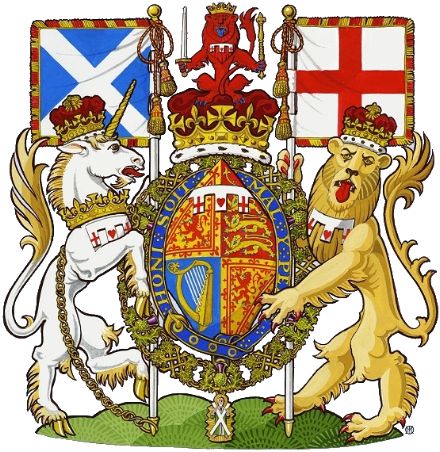
The Great Seal of Carolina
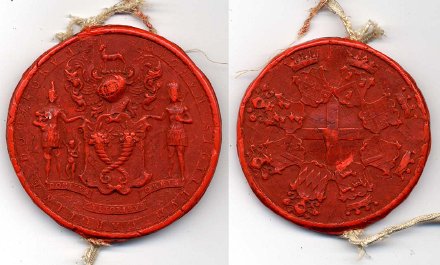
THE ROYAL CHARTER which erected the Province of Carolina created the colony as a county palatine, similar to Durham, Chester, and Lancashire back in England. However, instead of being ruled by a Count Palatine (or Prince-Bishop in Durham’s case), Carolina, named after England’s martyr-king Charles I, was to be ruled by eight Lords Proprietor, the eldest of which would hold the title of Lord Palatine of Carolina. The charter even allowed for the granting of titles…
…to Men well deserving the same Degrees to bear, and with such Titles to be Honoured and adorned, AND WHEREAS by our form of Government It was by our said Predecessor Established and Constituted, and is by us and our Heires and Successors for ever to be observed, That there be a certain Number of Landgraves and Cassiques who may be and are the perpetual and Hereditary Nobles and Peers of our said Province of Carolina, and to the End that above Rule and Order of Honor may be Established and Settled in our Said Province.
The granting of the titles of ‘landgrave’ and ‘cassique’ never really took off, but the Lords Proprietor did have a rather splendid Great Seal for their own private fiefdom in the New World, an impression of which is happily preserved by the good people of the South Carolina Department of Archives and History down in the Palmetto State.
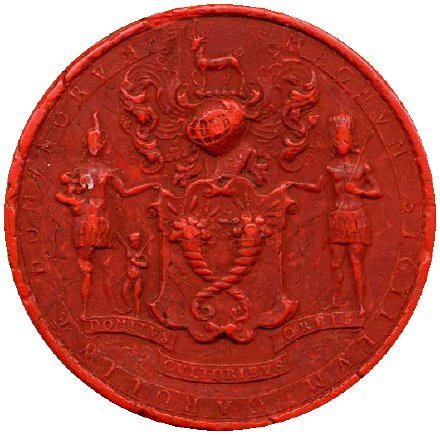
The obverse (above) shows the arms of the Province of Carolina with two cornucopias in saltire. Joseph McMillan, Director of Education for the American Heraldry Society, has posited that this is the probable origin of the cornucopia depicted in the Great Seal of the State of North Carolina, the larger of the two Carolinas. The motto reads “Domitus Cuitoribus Orbis” which perhaps some learned reader could translate properly. The reverse (below) depicts the eight heraldic shields of the Lords Proprieter, surrounding a simple Cross of Saint George. Some readers may recall this configuration being used, in a much simplified form, in the heraldic achievement recently devised by the College of Arms for the Senate of North Carolina, mentioned and depicted previously on this site. The arms of the North Carolinian Senate also show the cornucopias in saltire in the crest above the shield.
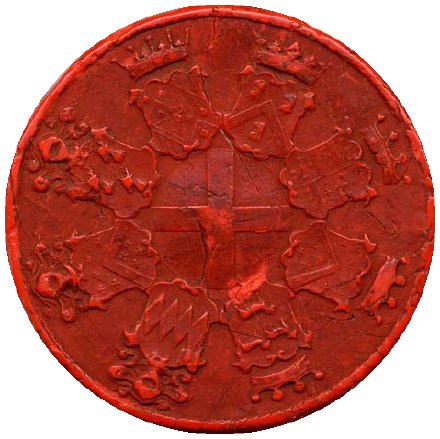
UPDATE:
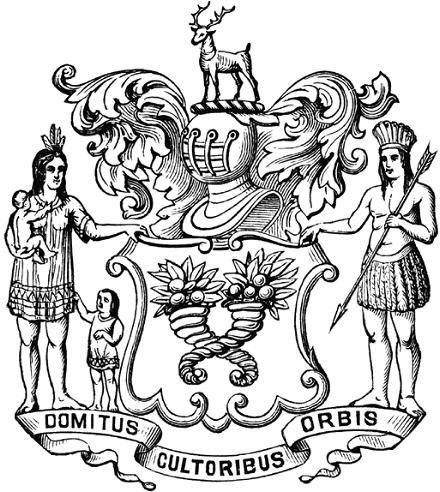
The commenter below is correct; the motto is ‘Domitus Cultoribus Orbis’ or ‘Tamed by the Husbandmen (cultivators) of the World’, as shown clearly in this alternate depiction which I have discovered.
Stauffenberg’s Arms
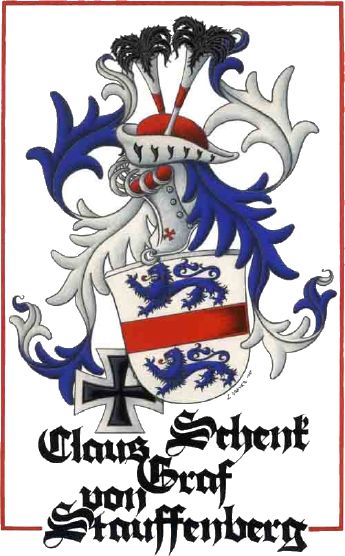
Hommage à la mémoire de Claus Philip Maria Schenk comte von Stauffenberg, homme d’honneur et de foi, qui participa à l’attentat contre Hitler, le 20 juillet 1944 dans le cadre du plan ‘Walkyrie’ destiné à renverser le régime nazi.
The arms of Claus Philipp Maria Schenk Count von Stauffenberg, beautifully depicted by the French heraldic artist Laurent Granier.

Previously: Long Live Our Holy Germany!
Some New York Coinage
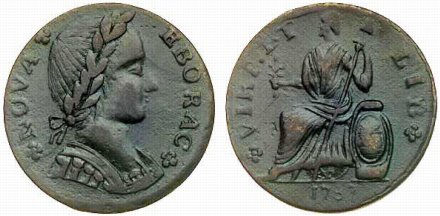
IT MAY INTEREST our readers to know that before the Feddle Gummint started throwing its weight around, the Great State of New York was in the habit of minting its own coinage. One of the most famous of the coins produced during the era is the 1787 ‘Nova Eborac’, so called for its abbreviation of Nova Eboracum; that’s ‘New York’ in the language of our ancient Roman forbearers.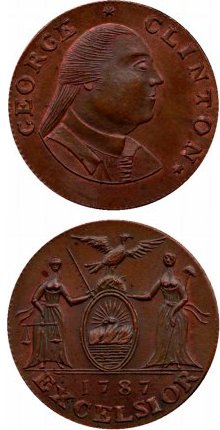 All decent people being lovers of monarchy, the New Yorkers of yore found themselves in a slight predicament. Their king had granted them independence four years earlier, but George III (the forgetful man!) neglected to indicate who would be king once he relinquished the sacred office. Every country must have a king — if not, then whose face would go on coins and such? “Not to worry,” saith the designer of the Nova Eborac. “We’ll stick a king on and just not say who he is.” And so they did, as seen on the obverse of the above Nova Eborac. The reverse depicts a figure who looks suspiciously like the Britannia on the old British coins. Old habits die hard. Around this Britannia-esque figure is the inscription VIRT. ET LIB for Virtus et Libertas – Virtue and Liberty.
All decent people being lovers of monarchy, the New Yorkers of yore found themselves in a slight predicament. Their king had granted them independence four years earlier, but George III (the forgetful man!) neglected to indicate who would be king once he relinquished the sacred office. Every country must have a king — if not, then whose face would go on coins and such? “Not to worry,” saith the designer of the Nova Eborac. “We’ll stick a king on and just not say who he is.” And so they did, as seen on the obverse of the above Nova Eborac. The reverse depicts a figure who looks suspiciously like the Britannia on the old British coins. Old habits die hard. Around this Britannia-esque figure is the inscription VIRT. ET LIB for Virtus et Libertas – Virtue and Liberty.
One Thomas Machin, however, clearly thought this was a bit silly and so decided to simply put the Governor on the coins he produced. His coins (seen on the right) show Gov. George Clinton on the obverse and a depiction of the arms of the Empire State on the reverse (they also grace the banner of this webpage). A chap named Ephraim Brasher went a little further and depicted neither the anony-king nor the governor but instead put depictions of heraldic arms on both side of the coin; New York on the obverse and the United States on the reverse. These coins are known as ‘Brasher’s Dubloons’ and the front and back can be seen below.
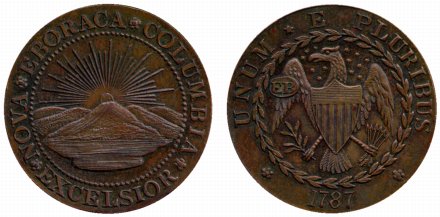
Previously: New York Currency
Recent American Heraldry
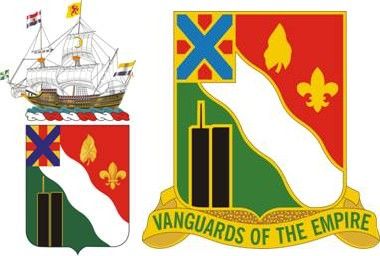
The Army Institute of Heraldry on 7 April 2006 approved a new coat-of-arms (left) and Distinctive Unit Insignia (right) for the 104th Military Police Battalion. According to the information provided by TIOH (as the Institute goes by), the red in the shield represents the unit’s role as a Field Artillery Battalion during World War II, while the green signifies the military police. The taro leaf represents the unit’s service in Hawai’i during the Spanish-American War, while the fleur-de-lis stands for service in France during both World Wars.
The black silhouette of the World Trade Center, a unique heraldic innovation, honors members of the unit who died in the Twin Towers on September 11, as well as the members of the battalion deployed to Manhattan. The service of earlier component units are represented in the canton. The red cross of St George symbolizes the War of Independence, while the blue saltire of St Andrew (akin to that of the Confederate battle flag) symbolizes the Civil War.
In blazonry, the language of heraldry, the shield is “per bend Gules and Vert, a bend wavy Argent, to chief a taro leaf and fleur-de-lis in bend Or; issuing from base the silhouette of the Twin Towers Sable edged of the fourth; on a canton of the last a cross Gules surmounted by a saltire Azure”. The crest is that which is standard to all New York Army National Guard units, depicting the Halve Maen on which Hudson explored New York harbor and his eponymous river. It is blazoned “from a wreath Argent and Gules, the full rigged ship “Half Moon” all Proper”.
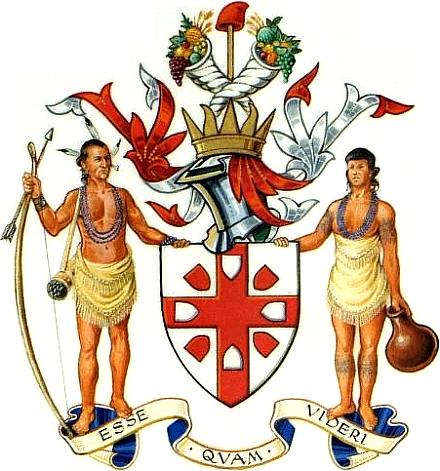
Meanwhile, the President of the Senate of North Carolina petitioned the College of Arms in London for a coat of arms for the upper house of the state legislature. The devisal by Letters Patent of Arms, Crest, and Supporters was made 25 November 2005 by Garter, Clarenceux, and Norroy and Ulster Kings of Arms. The eight little shields (known as escutcheons in blazonry) on the main shield allude to the eight proprietary Lords of the Province of Carolina. The colonial grant for Carolina was one of the most feudal, allowing the Lords of Carolina to grant minor hereditary titles of nobility, and in terms of heraldry allowed for the appointment of a Carolina Herald to grant arms independently of the College of Arms in England. The noble coronet atop the shield is apparently one of the heraldic ornaments worked out in 1705 for landgraves and cassiques in the Province of Carolina.
The shield of the coat of arms of the Senate of North Carolina is blazoned as “Argent on a Cross between four Escutcheons bases inwards Gules four Escutcheons bases also inwards Argent” while the crest is “Issuant from a Coronet of a Noble of the former Province of Carolina Or a Cap of Liberty Gules raised upon a Pole Or between two Cornucopiae in saltire Argent replenished proper”. The supporters are “On each side an Aborigine of North Carolina as depicted by John White in the reign of Queen Elizabeth the First that on the dexter a Warrior supporting with his exterior hand a Long Bow and holding an Arrow girded at his back a Quiver that on the sinister a Woman holding in her exterior hand a Gourd all proper”.
An interesting note: the lower house of North Carolina’s General Assembly was known as the House of Commons until the conquest of the South during the Civil War.
Images from the United States Army Institute of Heraldry and the College of Arms respectively.
Cassock Pursuivant
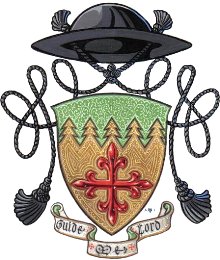 Last night the G&B played host to a lecture by one Fr. Guy Selvester, America’s ecclesiastical heraldist extraordinaire (arms at right). The good Reverend clearly has an unadulterated and unaffected love for heraldry, which, as he was very keen to point out, is unquestionably both an art and a science. He also has flaming red sideburns which give one the vague impression that he was a Civil War chaplain in a past life. After a brief introduction from a member of the G&B’s heraldry committee, the cassocked Father Guy gave a very clear and well-delivered talk, amply displaying his broad and deep knowledge of the subject, especially when responding to off-the-cuff inquiries from the audience.
Last night the G&B played host to a lecture by one Fr. Guy Selvester, America’s ecclesiastical heraldist extraordinaire (arms at right). The good Reverend clearly has an unadulterated and unaffected love for heraldry, which, as he was very keen to point out, is unquestionably both an art and a science. He also has flaming red sideburns which give one the vague impression that he was a Civil War chaplain in a past life. After a brief introduction from a member of the G&B’s heraldry committee, the cassocked Father Guy gave a very clear and well-delivered talk, amply displaying his broad and deep knowledge of the subject, especially when responding to off-the-cuff inquiries from the audience.
Of course no talk on ecclesiastical heraldry would be complete without mentioning the late Bruno Heim, the expert on church heraldry as well as Grand Prior of the Constantinian Order and the first full papal nuncio to the Court of St. James since the Reformation. Heim’s book Heraldry in the Catholic Church (available in the St Andrews University Library) is the essential work on the subject. Fr. Selvester interestingly pointed out that Blessed Pope John XXIII intended to found a heraldic authority for the Church. He was dissuaded from this task by none other than Archbishop Heim, who believed the Church covered too far broad a swathe to effectively and appropriately constitute its own heraldic authority mindful of the vernacular traditions. (more…)
Search
Instagram: @andcusack
Click here for my Instagram photos.Most Recent Posts
- Bicycle Rack April 29, 2024
- Burns Tower April 19, 2024
- Patrick in Parliament March 18, 2024
- Articles of Note: 13 March 2024 March 13, 2024
- Cambridge March 9, 2024
Most Recent Comments
Book Wishlist
Monthly Archives
Categories


